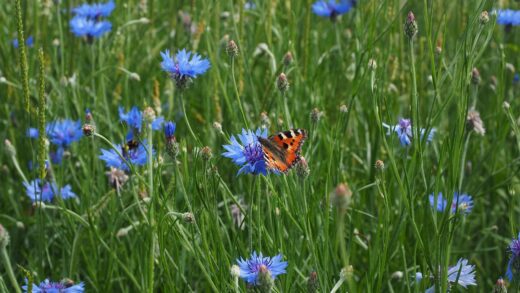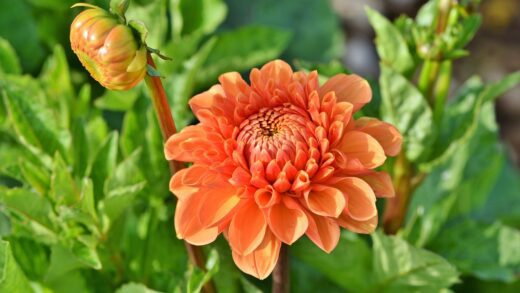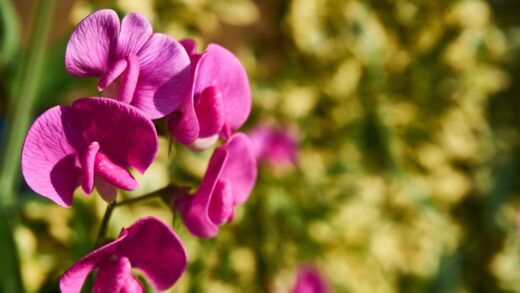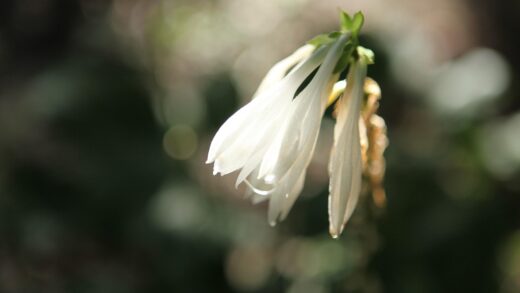Sunlight is the single most essential ingredient for a thriving lantana plant. This species is a quintessential sun-worshipper, and its entire life cycle, from vigorous growth to its famously prolific blooming, is fueled by direct, intense light. Understanding and providing for its high light requirements is not merely a suggestion for better performance but a fundamental necessity for its survival and success in the garden. Without adequate sunlight, a lantana will be a pale imitation of its potential, characterized by sparse, leggy growth and a disappointing lack of its signature vibrant flower clusters. Therefore, the first and most critical decision in cultivating this plant is choosing a location where it can bask in the sun for most of the day.
The quantity of sunlight a lantana receives directly correlates with the quantity and quality of its blooms. A plant situated in a location that receives a minimum of six to eight hours of direct, unfiltered sunlight will produce the most abundant and brightly colored flowers. This is because the process of photosynthesis, which creates the energy the plant needs to grow and flower, operates at its peak efficiency in high-light conditions. The more energy the plant can produce, the more resources it can allocate to its reproductive effort, which for an ornamental plant, translates to a spectacular floral display.
While lantana is known for its toughness and adaptability in many respects, such as its tolerance for poor soil and drought, it offers very little compromise when it comes to its need for sun. Attempts to grow it in partial or full shade will invariably lead to disappointment. The plant will stretch desperately towards any available light source, resulting in long, weak stems with large gaps between the leaves. This etiolation is a clear sign that the plant is light-starved and is struggling to survive.
Ultimately, all other aspects of lantana care, from watering to fertilizing, are secondary to providing the correct light exposure. You can have the perfect soil and a meticulous care routine, but if the plant is not receiving enough sun, it will never perform to its full potential. When planning your garden, think of lantana as a key player for your sunniest, hottest, and most exposed locations—the very spots where more delicate plants might falter. In these conditions, lantana will not just survive; it will flourish, rewarding you with a season-long spectacle of color.
The importance of full sun exposure
Full sun, in horticultural terms, is generally defined as an area that receives six or more hours of direct, unimpeded sunlight per day. For lantana, this is the minimum requirement for good performance, with eight or more hours being even better. The intensity of the sun is also a factor; the strong afternoon sun, particularly from a south or west-facing exposure, is ideal for promoting the most vigorous growth and prolific flowering. This plant is native to tropical regions, and its entire biology is adapted to thrive under intense solar radiation.
Sunlight is the direct energy source for photosynthesis, the process by which plants convert light, water, and carbon dioxide into sugars, which are the fuel for all of their metabolic activities. When a lantana receives ample sunlight, it can produce an abundance of this energy. This energy surplus is then channeled into producing flowers and, in fertile varieties, seeds. A plant in a lower light situation will produce only enough energy to maintain its basic life functions and vegetative growth, with little to nothing left over for the energy-intensive process of flowering.
Beyond just flowering, full sun exposure also contributes to the overall health and structure of the plant. In bright light, the internodes—the spaces on the stem between the leaf sets—remain short, leading to a dense, bushy, and compact plant. This structure is not only more aesthetically pleasing but also stronger and more resilient. The intense sun also helps to keep the foliage dry, which can reduce the incidence of fungal diseases like powdery mildew that thrive in more shaded, damp conditions.
It is also worth noting that the vibrancy of the flower color can be influenced by the intensity of the light. The multi-toned effect of many lantana cultivars, where flowers in a single cluster change color as they age, is often most pronounced on plants grown in full, bright sun. The pigments within the flowers develop more fully under high-light conditions, leading to a richer and more dramatic display. This is another reason why providing optimal light is key to enjoying the full ornamental value of this plant.
Symptoms of insufficient light
Recognizing the signs of inadequate light is crucial for diagnosing a struggling lantana and taking corrective action. The most obvious and telling symptom is a significant reduction or complete absence of flowers. A lantana that is otherwise healthy but is not blooming is almost certainly not receiving enough direct sunlight. This is the plant’s way of conserving energy, prioritizing survival and vegetative growth over the demanding process of reproduction when resources are scarce.
Another clear indicator of insufficient light is a change in the plant’s growth habit. Instead of being compact and bushy, the plant will become “leggy.” This means the stems will be unusually long and spindly, with large gaps between the leaves. This phenomenon, known as etiolation, is the plant’s physical attempt to stretch and reach for a better light source. The leaves themselves may also be larger but paler green than normal, as the plant tries to maximize its light-capturing surface area.
A plant grown in low light is also more susceptible to a variety of health problems. The weak, stretched stems are more prone to breaking and cannot support a full canopy of leaves. Furthermore, the lack of direct sun and the reduced air circulation that often accompanies shadier spots create a more humid microclimate around the plant. This makes it a prime target for fungal diseases, particularly powdery mildew, which can quickly cover the leaves in a white, dusty film and further sap the plant’s limited energy.
If you observe these symptoms in your lantana, the solution is straightforward: move the plant to a sunnier location. If the plant is in a container, this is a simple task. If it is planted in the ground, you may need to consider transplanting it to a more suitable spot in your garden. After being moved to a location with adequate sun, a leggy lantana can be pruned back to encourage new, more compact growth, and it will typically begin to produce flowers within a few weeks as its energy reserves are replenished.
Can lantana tolerate partial shade?
While full sun is the undisputed ideal for lantana, the question of whether it can tolerate partial shade often arises. The answer is nuanced: it can survive, but it will not thrive. A location that offers partial shade, meaning it receives somewhere between four to six hours of direct sun per day, will result in a plant with noticeably diminished performance. The most significant impact will be on flowering; a lantana in partial shade will produce far fewer blooms than one in full sun.
In a partial shade setting, particularly one that receives only morning sun and is shaded during the intense afternoon hours, the lantana’s growth will likely be leggier and more open than is desirable. The plant will constantly be reaching for more light, leading to a less compact and attractive form. While it may produce some flowers, the display will be sporadic and lack the sheer abundance that makes lantana such a popular garden choice. Essentially, you will be growing a foliage plant with the occasional flower, rather than the floral powerhouse it is meant to be.
There might be specific circumstances where partial shade is a tolerable compromise. For instance, in extremely hot desert climates, a bit of afternoon shade can sometimes help protect the plant from scorching during the absolute peak of summer heat, reducing water stress. However, even in these climates, the plant should still receive at least six hours of direct sun, preferably in the morning and early afternoon. Any less than this, and the trade-off in reduced blooming will be significant.
For gardeners in more temperate climates, there is very little benefit to siting a lantana in partial shade. If you have a location with limited sun, it is far better to choose a different plant that is specifically adapted to those conditions. There are many beautiful shade-loving plants that will perform wonderfully in such a spot. Forcing a sun-loving plant like lantana into a shaded area will only lead to a constant struggle and a lackluster performance, doing a disservice to both the plant and the gardener.
Light requirements for indoor overwintering
When you bring a lantana indoors to overwinter it as an active houseplant, providing adequate light becomes the single greatest challenge. A standard indoor room, even one with a window, offers significantly lower light levels than an outdoor garden setting. To keep a lantana healthy and actively growing through the winter, you must place it in the absolute sunniest spot you have available. This typically means a large, unobstructed south-facing window where it can receive the most direct sunlight possible throughout the day.
Even in the brightest window, the plant may still struggle due to the shorter daylight hours of winter. You will likely notice a significant slowdown in growth, and it is unrealistic to expect the same level of flowering as you would see outdoors in the summer. Some leaf drop is also normal as the plant adjusts to the lower light conditions. The goal during this period is not a spectacular display, but simply to keep the plant healthy and alive until it can be moved back outside in the spring.
If you do not have a sufficiently sunny window, you will need to supplement with artificial lighting to keep the plant in good condition. A full-spectrum grow light is the most effective option. You will need to position the light close to the plant, just a few inches above the foliage, and keep it on for 12 to 16 hours per day. This can provide the light intensity and duration needed to maintain healthy, compact growth and may even encourage some sporadic flowering during the winter months.
If you are unable to provide either a very sunny window or supplemental grow lights, it is far better to choose the dormant overwintering method. Attempting to keep a lantana as an active houseplant in low-light conditions will result in a weak, etiolated, and pest-prone plant that is unlikely to survive the winter in good health. Recognizing your home’s light limitations and choosing the appropriate overwintering strategy is key to successfully preserving your plant for the following season.
📷 Flickr / Szerző: Mauricio Mercadante / Licence: CC BY-NC-SA 2.0


















